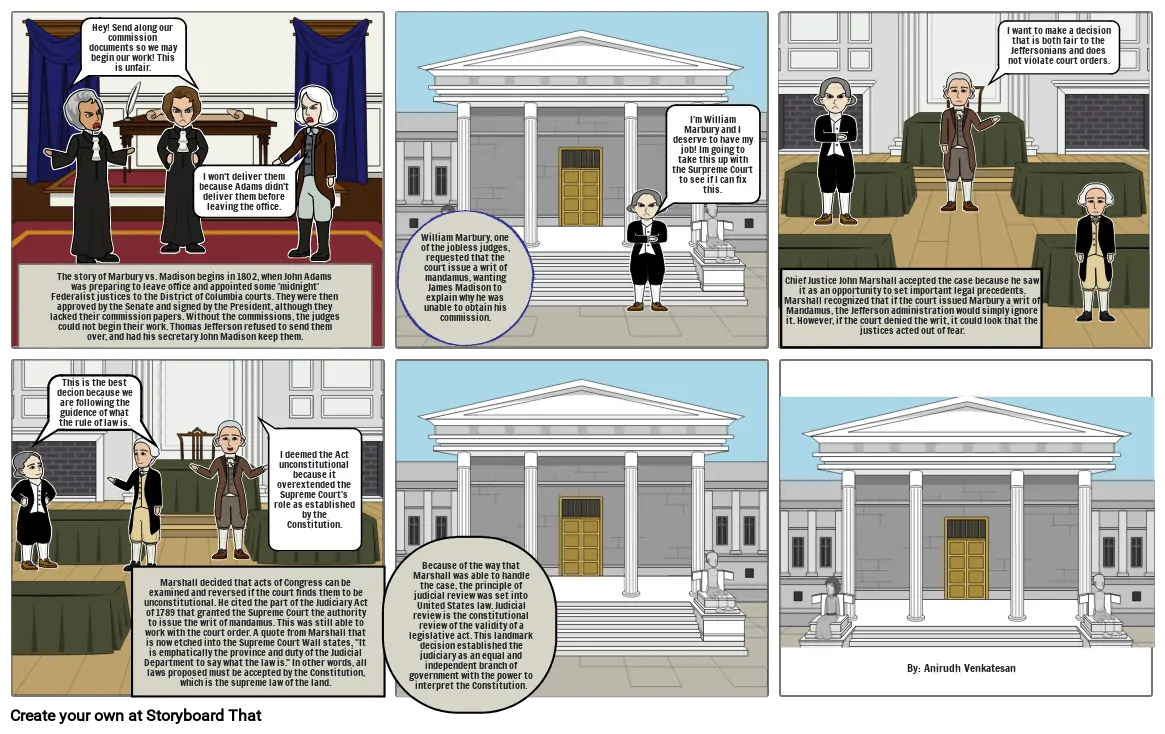Madison v. Marbury

Texto del Guión Gráfico
- The story of Marbury vs. Madison begins in 1802, when John Adams was preparing to leave office and appointed some 'midnight' Federalist justices to the District of Columbia courts. They were then approved by the Senate and signed by the President, although they lacked their commission papers. Without the commissions, the judges could not begin their work. Thomas Jefferson refused to send them over, and had his secretary John Madison keep them.
- Hey! Send along our commission documents so we may begin our work! This is unfair.
- I won't deliver them because Adams didn't deliver them before leaving the office.
- William Marbury, one of the jobless judges, requested that the court issue a writ of mandamus, wanting James Madison to explain why he was unable to obtain his commission.
- I'm William Marbury and I deserve to have my job! Im going to take this up with the Surpreme Court to see if I can fix this.
- Chief Justice John Marshall accepted the case because he saw it as an opportunity to set important legal precedents. Marshall recognized that if the court issued Marbury a writ of Mandamus, the Jefferson administration would simply ignore it. However, if the court denied the writ, it could look that the justices acted out of fear.
- I want to make a decision that is both fair to the Jeffersonians and does not violate court orders.
- This is the best decion because we are following the guidence of what the rule of law is.
- Marshall decided that acts of Congress can be examined and reversed if the court finds them to be unconstitutional. He cited the part of the Judiciary Act of 1789 that granted the Supreme Court the authority to issue the writ of mandamus. This was still able to work with the court order. A quote from Marshall that is now etched into the Supreme Court Wall states, "It is emphatically the province and duty of the Judicial Department to say what the law is." In other words, all laws proposed must be accepted by the Constitution, which is the supreme law of the land.
- I deemed the Act unconstitutional because it overextended the Supreme Court's role as established by the Constitution.
- Because of the way that Marshall was able to handle the case, the principle of judicial review was set into United States law. Judicial review is the constitutional review of the validity of a legislative act. This landmark decision established the judiciary as an equal and independent branch of government with the power to interpret the Constitution.
- By: Anirudh Venkatesan
Más de 30 millones de guiones gráficos creados
¡Sin Descargas, sin Tarjeta de Crédito y sin Necesidad de Iniciar Sesión Para Probar!
